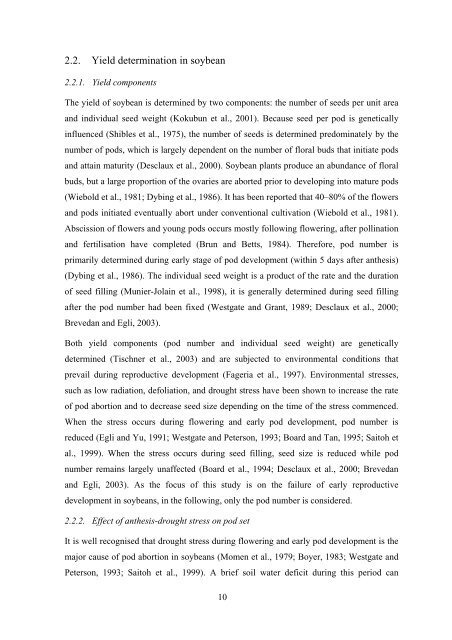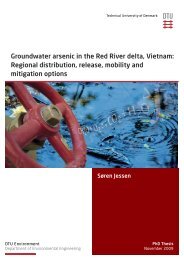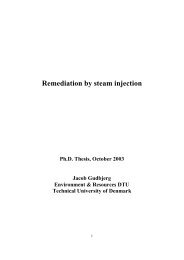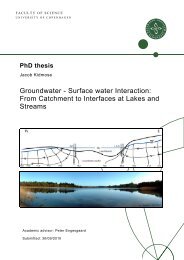Download PhD Thesis - Fiva
Download PhD Thesis - Fiva
Download PhD Thesis - Fiva
You also want an ePaper? Increase the reach of your titles
YUMPU automatically turns print PDFs into web optimized ePapers that Google loves.
2.2. Yield determination in soybean<br />
2.2.1. Yield components<br />
The yield of soybean is determined by two components: the number of seeds per unit area<br />
and individual seed weight (Kokubun et al., 2001). Because seed per pod is genetically<br />
influenced (Shibles et al., 1975), the number of seeds is determined predominately by the<br />
number of pods, which is largely dependent on the number of floral buds that initiate pods<br />
and attain maturity (Desclaux et al., 2000). Soybean plants produce an abundance of floral<br />
buds, but a large proportion of the ovaries are aborted prior to developing into mature pods<br />
(Wiebold et al., 1981; Dybing et al., 1986). It has been reported that 40–80% of the flowers<br />
and pods initiated eventually abort under conventional cultivation (Wiebold et al., 1981).<br />
Abscission of flowers and young pods occurs mostly following flowering, after pollination<br />
and fertilisation have completed (Brun and Betts, 1984). Therefore, pod number is<br />
primarily determined during early stage of pod development (within 5 days after anthesis)<br />
(Dybing et al., 1986). The individual seed weight is a product of the rate and the duration<br />
of seed filling (Munier-Jolain et al., 1998), it is generally determined during seed filling<br />
after the pod number had been fixed (Westgate and Grant, 1989; Desclaux et al., 2000;<br />
Brevedan and Egli, 2003).<br />
Both yield components (pod number and individual seed weight) are genetically<br />
determined (Tischner et al., 2003) and are subjected to environmental conditions that<br />
prevail during reproductive development (Fageria et al., 1997). Environmental stresses,<br />
such as low radiation, defoliation, and drought stress have been shown to increase the rate<br />
of pod abortion and to decrease seed size depending on the time of the stress commenced.<br />
When the stress occurs during flowering and early pod development, pod number is<br />
reduced (Egli and Yu, 1991; Westgate and Peterson, 1993; Board and Tan, 1995; Saitoh et<br />
al., 1999). When the stress occurs during seed filling, seed size is reduced while pod<br />
number remains largely unaffected (Board et al., 1994; Desclaux et al., 2000; Brevedan<br />
and Egli, 2003). As the focus of this study is on the failure of early reproductive<br />
development in soybeans, in the following, only the pod number is considered.<br />
2.2.2. Effect of anthesis-drought stress on pod set<br />
It is well recognised that drought stress during flowering and early pod development is the<br />
major cause of pod abortion in soybeans (Momen et al., 1979; Boyer, 1983; Westgate and<br />
Peterson, 1993; Saitoh et al., 1999). A brief soil water deficit during this period can<br />
10





